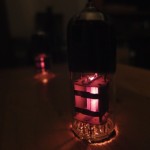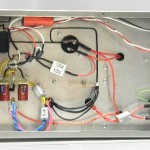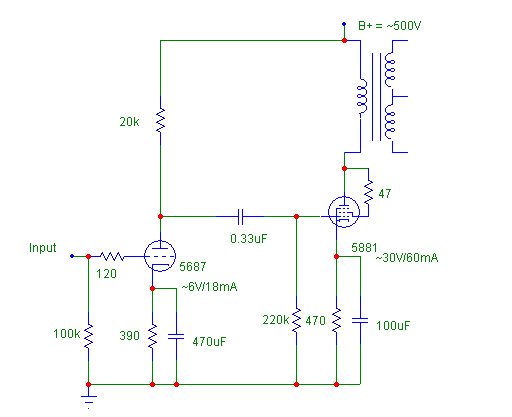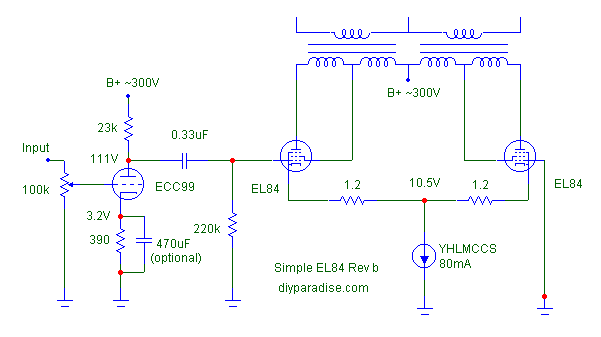No, not the game show. Read on.
Weakest Link
Other than the joys of bringing you closer to your music, the joys of upgrading definitely ranks as one of the many "funs" of this hobby. Deep pockets hobbyist can always spend and spend on commercial gear, but avid DIYers’ approach is different. More of looking at the internals rather than externals. But if you want to upgrade your gear, where do you start?
Weakest link
Forget about cables, forget about tubes, forget equipment feet, forget everything else. For maximum bang-for-the-buck upgrades, you need to look at the whole system and study which is the Weakest Link. If you have RM1000 to spend, spending all your moolah on the internals of your amp isn’t my ticket for better sound. To give you an example, if you intend to spend RM1000 on intercoonects, let me assure you that spending RM300 in the CD player, RM400 in the amp and another RM300 in the speakers (or some ratio than this) will yield a much bigger improvement. I mean what’s the point of having a RM1000 interconnect if the signal will ultimately go through a RM0.20 electrolytic? I’d rather look at weak links throughout the system chain and apply cures topically. Confused? Let’s look at piece by piece.
CD player and DAC
To me, this is the place where the "bang-of-the-buck quotient" ranks highest. And to me, the weakest link is… the digital power supply. Think about it. Sound is analog. But music information in CD is digital. To convert this digital info (ones and zeroes) to analog requires lots of processing. And a lot of this processing is in the digital domain. Thus you need, digital decoders, digital filters, digital-analog-converter blah blah blah. Not to mention some other features like upsampling, HDCD decoder AND that giant micro-controller that controls your CDP functions. Now you can’t make do without all these but one thing you must know is that they work in the digital domain. They process data in speeds of MHz range. Invariably, all this MHz is bad for our analog domain of 20-20kHz. While most folks are worried about the EMI/RFI garbage these ICs spit out, the worse problem is how they corrupt the power supply. The same power supply that is going to feed your analog circuitries. You have separate power transformers for analog and digital? Doesn’t matter, noise can still travel throughout, even through "ground" lines. As such, in my opinion, digital garbage is the WORST offender to good sound.
Have a look at this page. See what happens on the power supply when the transistor switches "on and off" at 1MHz? 15MHz? The power supply swings with it. Other than the switching frequency, observe all the other unneccessary noise on the power supply. Those capacitors are trying very hard to hold the power supply stable, but it’s wishful thinking as at such high frequencies, most capacitors are worth… shit. Yes. See how they struggle with all the noise. And all this noise is going to affect your analog signals. Bad eh? But do you see some respite? Look at Elna Cerafine and Sanyo Oscons. The noise spectra on the power supply lines are the most benign with these caps. They are not affected so badly. Of course, reading that page further, you can learn how to do better than these caps but they are a good start. I have modified some DACs and CD players. My customers have done the same and so far, the time and tested approach to improve the power supply (digital here) has worked wonderfully. The effects of cleaner power supply? Lower noise floor, a more stable image, much better lower level detail retrieval. One guy even said that spending RM30 on changing just 3 measly caps in his RM3k DAC yields a much much bigger improvement than spending RM1k on his power cord!
But why don’t the manufacturers themselves pay more attention to this? Perhaps they did but when the bottom line people come about, cost cutting is the name of the game. Minimize cost and maximize profit. Never heard of this? Where have you been? Thus the few RM Sanyo Oscon is discarded in favour of some generic RM0.20 from God-knows-where. Then also is the worst problem of PCB layout. PCB layout is a means for simplying manufacturing. It’s easier to use PCBs rather than do everything point to point. Unfortunately, PCB layout is meant more for manufacturing rather than electrical performance. It’s normally done by some half-baked PCB designer (whose only reason for existence in that company is probably because he is the only one trained to use this software) rather than the circuit designer himself. Capacitors which need to be as close to the IC as possible is normally layout-ed too far away. There’s a bypass cap you say? Well, move the bypass cap closer, if possible on the IC power supply lines and tell me whether you hear any improvement. A distance of 5mm is still too far, if you don’t believe me. Here’s a free tweak. Any electrolytic capacitor beside any digital IC is best to sit snugly on the PCB. If your electrolytic is "standing" in the air, use your soldering iron, loosen the connection and push it to sit snugly on the PCB. Immediately the improvement in sound is noticeable! Try it if you don’t believe me.
Speakers
Unless you are using single drivers, you most probably have a crossover in your speaker. Now here is another potential "pain-in-the-arse". Open up and check the quality of your crossover. If you are lucky, you will find a non-polarized electrolytic in there. To me, this is the enemy NUMERO UNO in your speaker. Please replace this devil with an equivalent value plastic cap. It doesn’t matter what this guy does, whether directly in the signal path or in parallel with the speaker driver. It could be a zobel network, notch filter or something else. I don’t care. If it’s there, take it out. When I first had my speakers, avid diyer friend Kenneth commented to me that "the bass doesn’t integrate with the music". I had no idea what he was talking about until many months later, I decided to take a look at the "weakest link" of my speaker. Replaced this guy with a GE polypropylene and… I was reborn. Now Kenneth’s words make a lot of sense! The bass definitely integrates with the music right now. Previously, it sounded "detached" from the music flow, if you get what I mean. Until today, it’s the biggest upgrade I have done to my speakers.
But what about the other plastic caps in there? Believe me, I tried before some dirt cheap made-in-China plastic cap and it didn’t sound too bad at all. I tried different caps and they have different colourations but none as bad as the "weakest link". DIYer buddy Waily replaced some of the mylar caps in his tweeter network with Solens and guess what? The Solens were just plain dreadful. Just goes to show that you really ought to listen to your tweaks. What about the mantra that "if you modify your gear, it won’t sound as the designer wanted it"? Geoff Husband of TNT Audio says its best here.
"Don’t be intimidated by the worry that "if the designer made it that way there must be a good reason" – the designer didn’t have your room, your system, or perhaps most importantly your ears…"
Amplifier
Now there’s simply too much to say here. I don’t even know where to start! But for tube equipment, the coupling caps are, in my honest opinion, the weakest link. I have seen, even in amps costing RM7k using some awful-sounding-piece-of-shit coupling cap. How do I know this? Hey hey! It’s definitely not by just looking at it! Replacing them with better quality caps (I have Auricaps and Jensens at my disposal so I use them. Use whatever you fancy.) brings about a night and day difference. But still, please listen to it. If your boutique cap sound worse, then that piece-of-shit probably isn’t so shitty as you think. But then, please tread carefully. Chances are it could something else in your system that is masking the sound of this guy. Something else is hindering the sound such that you can’t hear an improvement with a boutique cap. Well, look at weakest links elsewhere.
Obviously, the mantra of improving the power supply also applies here but lack of space inside the chassis is the biggest deterent here, so I won’t say more.
Misc
Lastly, there’s other things you could do like having "better sounding" power cord, interconnects, equipment feet and what else, but believe me. Target the weakest link as in above first. You’ll be amazed by what difference it brings. I’ll forever remember these immortal words.
"Damn! This RM30 worth of caps brings about a bigger improvement than my RM1k power cord!"








